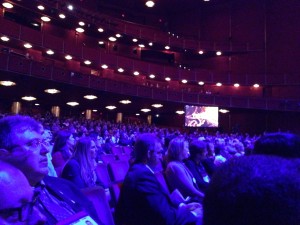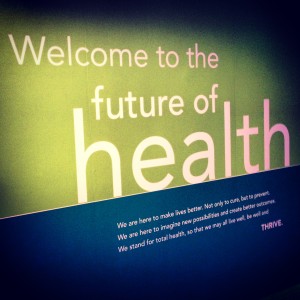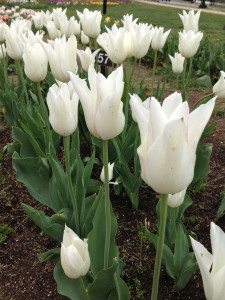TEDMED: What you see is what you get
After having time to reflect on everything I saw and learned at TEDMED 2014, I keep coming back to an idea that was planted in my brain during the conference: Your personal perspective is going to shape what you take away from TEDMED.
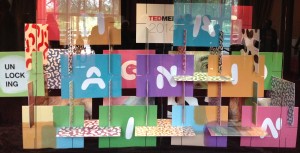 Maybe that seems obvious. I’d certainly be curious to hear what other delegates think. But in the work I do around healthcare, my primary focus is people — helping them be more engaged in their own care through education and activism. And the theme that kept resonating for me at TEDMED, over and over, was humanity.
Maybe that seems obvious. I’d certainly be curious to hear what other delegates think. But in the work I do around healthcare, my primary focus is people — helping them be more engaged in their own care through education and activism. And the theme that kept resonating for me at TEDMED, over and over, was humanity.
Of course, I was impressed by the high-tech solutions and innovations I learned about. When it comes to enhancing the healthcare experience for people, the possibilities are limitless. But technology will only get you so far. True innovation still requires a human touch — improving the way physicians and patients interact with each other, finding strategies that truly center care around patients and their loved ones.
I was constantly reminded of how exploring our own humanity can open the doors of possibility and improve the way we approach healthcare.
There was Danielle Ofri, an attending physician at Bellevue Hospital, who bravely shared her personal story of unintentionally endangering a patient’s life as a way to underscore the vital importance of reducing preventable medical errors. The way to do that, she said, is to create an environment where physicians are encouraged to admit their vulnerability and humility, to say “I don’t know.” Because if care providers never admit their uncertainty or their mistakes, how can the profession ever develop ways to reduce those errors?
Elizabeth Nabel, the President of Brigham and Women’s Hospital, talked about humility, too, and emphasizing the need to ask “What if?” and admit what we don’t know in order to drive change and improvements in our healthcare system.
Not everyone on the TEDMED stage was a healthcare professional. One of the talks that resonated with me the most was 16-year-old Rosie King, who spoke about her own autism and how she sees it as an opportunity to lead an imaginative life instead of one in which she is identified by a label. She reminded us that we must put the person first.
 Time and time again, speakers underscored the vital need to recognize the humanity in healthcare — as did the people I spoke with between sessions, like Mark Hyman, who advocates personalized care through Functional Medicine.
Time and time again, speakers underscored the vital need to recognize the humanity in healthcare — as did the people I spoke with between sessions, like Mark Hyman, who advocates personalized care through Functional Medicine.
Kitra Cahana, a photographer who documented her father’s determination to regain his abilities after a debilitating stroke, a powerful testament to the strength of the human spirit.
Elizabeth Kenny, who shared her horrifying personal experience with anti-depressants, which made her much sicker than any disease did. “This talk is only 12 minutes long,” she said. “Most patients don’t get to spend 12 minutes with their primary care physician.”
Leana Wen, an emergency medicine physician whose “Who’s My Doctor” initiative is encouraging complete transparency from doctors so patients can make informed decisions about who will be caring for them. Her idea of radical transparency isn’t exactly popular with some doctors, but it puts the power of decision-making in patients’ hands.
Julian Treasure, Mariana Figueiro and Robin Guenther, who spoke about the impact of sound, light and environment on the patient experience and, in particular, healing. It’s been said that hospitals are the worst place to get rest and recover, because of all the noise and light, not to mention the toxic materials and chemicals that are still used too often. These experts are working to create care environments that promote better health.
There was so much more, and you can read some of my initial thoughts in a Storify I created right after the conference.
But on reflection, my initial gut response to TEDMED 2014 has proven correct.
As #TEDMED concludes, my first gut-response takeaway: Think big, work small — at the level of the human experience.
— Amy Lynn Smith (@alswrite) September 12, 2014
Because TEDMED is all about sparking our imaginations and drawing conclusions that lead to new ideas, I can’t help thinking about a production of Stephen Sondheim and James Lapine’s Sunday in the Park with George that I saw a few days after TEDMED.
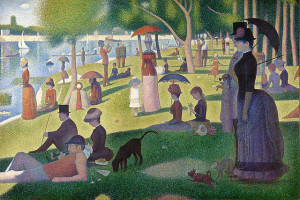 This imagined story behind Georges Seurat’s painting, “A Sunday Afternoon on the Island of La Grande Jatte,” is all about connecting the dots, about finding the humanity in whatever passion drives us, about not being so caught up in the work that we forget to experience life all around us.
This imagined story behind Georges Seurat’s painting, “A Sunday Afternoon on the Island of La Grande Jatte,” is all about connecting the dots, about finding the humanity in whatever passion drives us, about not being so caught up in the work that we forget to experience life all around us.
Our work is a collection of everything we’ve experienced — of everything that matters to us at the human level. I know that my TEDMED 2014 experience was shaped by the issues that matter most to me.
Although there’s a lot we don’t know about Georges Seurat, there’s no question he saw the world in a singular, innovative way.
We all have the power to shape the world with our own unique view. So as I move forward from TEDMED, I’m left with a new appreciation for the closing line of Sunday in the Park with George, written to describe Seurat:
“White. A blank page or canvas. His favorite. So many possibilities.”
.
[Photo credits, top to bottom: TEDMED theatre entrance in DC by Amy Lynn Smith; selfie with Dr. Mark Hyman; Seurat painting photo by Plum Leaves via Flickr.]

